think pink

Inspiration, survival and guidance in the fight against breast cancer.



In support of Breast Cancer Awareness Month



Inspiration, survival and guidance in the fight against breast cancer.



In support of Breast Cancer Awareness Month

NEWPORT - In 1997 Michele Sexton was diagnosed with breast cancer. She didn’t know what the future held, but she optimistically headed down a treatment path. She had a lumpectomy, but doctors then found cancer in her lymph nodes. Her treatment then became a mastectomy, 13 chemo treatments and 29 radiation treatments. She then went on an antihormonal pill for five years.
She has had no recurrence. Sexton did have a small skin cancer on her nose, which she said was a “little problem. It sure wasn’t like breast cancer.”
Looking back, Sexton said she has been blessed. “I had a job to do. Plain and simple,” she said.
“I went through breast cancer and I survived. I understand what it is like to get that diagnosis and undergo the treatments. I understand the emotions. When someone calls me, I do understand. I have been through it myself,” she added. In March 1999, Sexton had made it through breast cancer, and she was wanting to do something to get cancer survivors together. She spoke with Nancy Oberst-Soesbee, who was working on the editorial staff of The Newport Plain Talk at the time.
“I told her I wanted to start a support group, and she put an article in the newspaper,” she recalled. “That is how Celebrate Life started.”
She said that the first meeting was held at her house. Seven people joined Sexton to meet that night.
When the pandemic started, the meetings had to stop. Everything had to be done over the phone. Now the meetings are back in session and 12 to 15 people usually attend the monthly sessions. The support group has members with all kinds of cancers, and helps those who have been diagnosed with any kind of cancer.
“When a cancer patient is undergoing treatment, they cannot be around people.
They cannot risk exposure,” Sexton said. “So we are still doing more talking over the phone.”
She said that Kathy Webb, another breast cancer survivor, has worked with her for years. She said that she and Webb both answer phones and help cancer patients.
“It takes a group of people to keep Celebrate Life going. I can’t do this alone. We want to reach out to as many people as possible and help as many cancer patients as possible,” she added.
Celebrate Life is a non-profit organization with a board of directors. All of the board members can identify with cancer as they have had a family member or loved one who has had a cancer diagnosis.
“It is important to me that they all understand cancer and the treatment process,” she said.
The main fundraiser for Celebrate Life is Cruise Against Cancer, which is an annual car show. Individuals and businesses also
contribute to Celebrate Life or have fundraisers for the organization.
The funds the organization receives are used to help cancer patients in Cocke, Jefferson and Sevier counties. Each cancer patient can receive a maximum of $600 per year from the support group. Those funds can help with travel expenses, utilities, medical costs and so forth.
There is currently a raffle to raise funds for Celebrate Life. She explained that Terry Malone of White Pine Hobby spoke with the oncology department in Morristown to determine what organization he could help, and they suggested Celebrate Life.

He has $1,700 invested in a radiocontrolled (RC) car that is about 18 inches long. She said that the vehicle is black with the pink signature ribbon for breast cancer awareness. Raffle tickets are being sold for $20 each for a chance to win the RC car.
“There are so many people with big hearts who want to help us help cancer patients,” Sexton said. “They want to give. They are joy filled.”
Tickets are available from Celebrate Life members.
Celebrate Life meets the fourth Thursday of every month at 7 p.m. at Smoky Mountain Home Health and Hospice. New members are welcome.
“We have no set budget,” Sexton said. “We depend solely on the goodness of people.”
Among the businesses that have contributed to the organization is Clayton Homes. She said the Newport Police Department has also contributed from their “No Shave November” fundraiser. Families have also made memorial contributions and donations in honor of loved ones.
“Any and all donations help us tremendously and allow us to assist more cancer patients in our local communities,” she said. Those who request assistance must provide documentation from a healthcare provider confirming a cancer diagnosis. That can be from a primary care provider, an oncologist or a social worker. In the average year, Celebrate Life helps anywhere from 50 to 75 cancer patients.
“We just need documentation showing they have cancer and are being treated,” she explained.
If you are experiencing medical issues and additional tests or a biopsy has been recommended, Sexton said listen to your healthcare providers.
“Don’t be afraid to know. Don’t put it off. The earlier you start treatment, the better the success rates. You can do something,” she said.
To learn more about Celebrate Life, to buy raffle tickets on the RC car or to make a contribution, call Michele Sexton at (865) 654-0468 or Kathy Webb at (423) 625-6603.








 By Jeannie Baitinger
By Jeannie Baitinger
I am a breast cancer survivor. My journey began in the fall of 2011. After a lumpectomy confirmed it was cancer, I began to research and found a test to determine recurrence called Oncotype DX. This test also determines if chemotherapy is necessary in early stage breast cancers. Oddly, even though my cancer was classified as stage two, the Oncotype DX was never offered to me by my surgeon or my oncologist. Had I not done my own research I would not have known this test was available. In fact, not only did I have to ask for it, I had to demand it which was my right to do so. According to the U.S. Breast Cancer Statistics for 2022, approximately 264,000 cases of breast cancer are diagnosed each year in women and approximately 2,100 cases in men. Surgery, chemotherapy and radiation are the standard of care for treatments. But what is really necessary?
































First and most importantly is early diagnosis. Monthly self breast exams along with yearly mammograms are key. Changes in the breast should be noted and diagnosed by diagnostic testing including mammograms, sonograms and biopsies. My situation was a bit different though. When I was 25 years old I found a lump in my right breast. A needle biopsy revealed it was a benign tumor but the surgeon warned me it would continue to grow, perhaps
becoming unattractive for a young woman. He recommended having it removed but I was young with no insurance so I did not. But what he didn’t tell me, likely because he didn’t know, was that as the lump grew it became a safe place for cancer to invade. Flash forward 25 years to 2011.





The lump and surrounding area began to itch. It wasn’t time for a mammogram yet and I ignored it. But soon after the itching began my breast dimpled and I knew I had trouble. I had the lump removed on November 11, 2011 and it was confirmed I had breast cancer. In my wildest dreams I would have never thought a lump I had for 25 years could become cancer but somehow it had. I wondered exactly how long I had cancer. The lump measured 5.5 centimeters which was large. The cancer measured 2.5 centimeters. The cancer had also spread from the lump and attached to the back chest wall, resulting in a mastectomy


with reconstruction.
After the mastectomy I was sent to see an oncologist in Knoxville. After looking at my pathology report, he determined 32 rounds of chemo were necessary and wanted to schedule a port immediately. I asked for the ONCO test first. He was not in favor of ordering it, saying I could not afford to wait for the results and that my

tumor was large. Still, my margins were clear and I told him I had that lump for 25 years but he said it was not wise to wait. He also mentioned my insurance may deny payment on the ONCO test. In fact, he told me this was my first experience with cancer but as an oncologist he deals




A breast cancer diagnosis inevitably leads to questions about the disease. The bulk of those questions undoubtedly are asked by the millions of women who are diagnosed with breast cancer. But millions more individuals, including friends and family members of recently diagnosed women, may have their own questions. Women can discuss the specifics of their diagnosis with their physicians. In the meantime, the following are some frequently asked questions and answers that can help anyone better understand this potentially deadly disease.
Cancer is a disease marked by the abnormal growth of cells that invade healthy cells in the body. Breast cancer is a form of the disease that begins in the cells of the breast. The National Breast Cancer Foundation (NBCF) notes that the cancer can then invade surrounding tissues or spread to other areas of the body.
The NBCF notes that exercise strengthens the immune system and women who commit to as little as three hours of physical activity per week can begin to reduce their risk for breast cancer. However, even routine exercise does not completely eliminate a womanÕs risk of developing breast cancer.
The organization Susan G. Komen, a nonprofit source of funding for the fight against breast cancer, reports that studies have shown eating fruits and vegetables may be linked to a lower risk for breast cancer, while consuming alcohol is linked to an increased risk for the disease. In
addition, the NBCF reports that a high-fat diet increases breast cancer risk because fat triggers estrogen production that can fuel tumor growth.
The NBCF reports that women who have been using birth control pills for more than five years are at an increased risk of developing breast cancer. However, the organization notes that risk is very small because modern birth control pills
contain low amounts of hormones.
Breastfeeding and breast cancer are linked, though the NBCF notes that the role breastfeeding plays in lowering cancer risk depends on how long a woman breastfeeds. The World Cancer Research Fund International notes that evidence indicates that the greater number of months women continue breastfeeding, the greater the protection they have against breast cancer.
The NBCF notes that researchers have found that traumatic events and losses can alter how the immune system functions, which can provide an opportunity for cancer cells to establish themselves within a person’s body. The NBCF urges women to identify ways to keep their stress levels in check.
Breast cancer education can be a valuable asset as women seek to reduce their risk for the disease.
CONTINUED FROM PAGE 3
with it all the time and I should trust his judgment if I wanted to survive. Yet I still insisted I wanted the ONCO test first. Two weeks later I received my results.
The oncology department called me with my results. I scored low at 22, leaving my odds at just 14% for a recurrence. The nurse also told me my future appointments were canceled and I did not need to come back. I no longer qualified for chemotherapy. And because my margins were clear I chose not to have radiation either. But this diagnosis also put me out there on my own with no further monitoring or scans without an oncologist except for a mammogram on the left side yearly. That has been the downside.
However, it has now been 12 years and I am healthy. I believe the oncologist had my best interest at heart considering the size of my tumor. But I also believe every person with an early stage breast cancer deserves the right to know their odds of a recurrence before chemotherapy is determined. I would have never known my odds of recurrence were low enough that chemotherapy was not beneficial. Though I still fear cancer I have less to fear with a 14% result.
I highly encourage anyone facing early stage breast cancer to ask for the Oncotype DX testing of the tumor after surgery but again, it should be noted that it may disqualify you for further treatments.
In my case I was delighted.
Jeannie Baitinger is a freelance reporter and frequent contributor to The Newport Plain Talk.
We of fe raf ul lr ang eo f in pa ti en ta nd out pa ti en t se rv ic es in cl udin g:
-Cardiolog

-Diagnostic I maging (X-ra s, C TScans, MRI Scans, 3D Mammography, Ultrasound)
-Emergenc y Care - Gastroenterology
-General Surger - Non-Sk illed Nursing Home
-Obstetrics Gynecology - Ophthalmology
-Orthopedic Ser ices-Pulmonology
-Rehabilitation Services (Ph sical herap ,Occupational Therap , and Speech Therap )

-Respirator y Care -Rural HealthClinic
-Surgical Ser vices





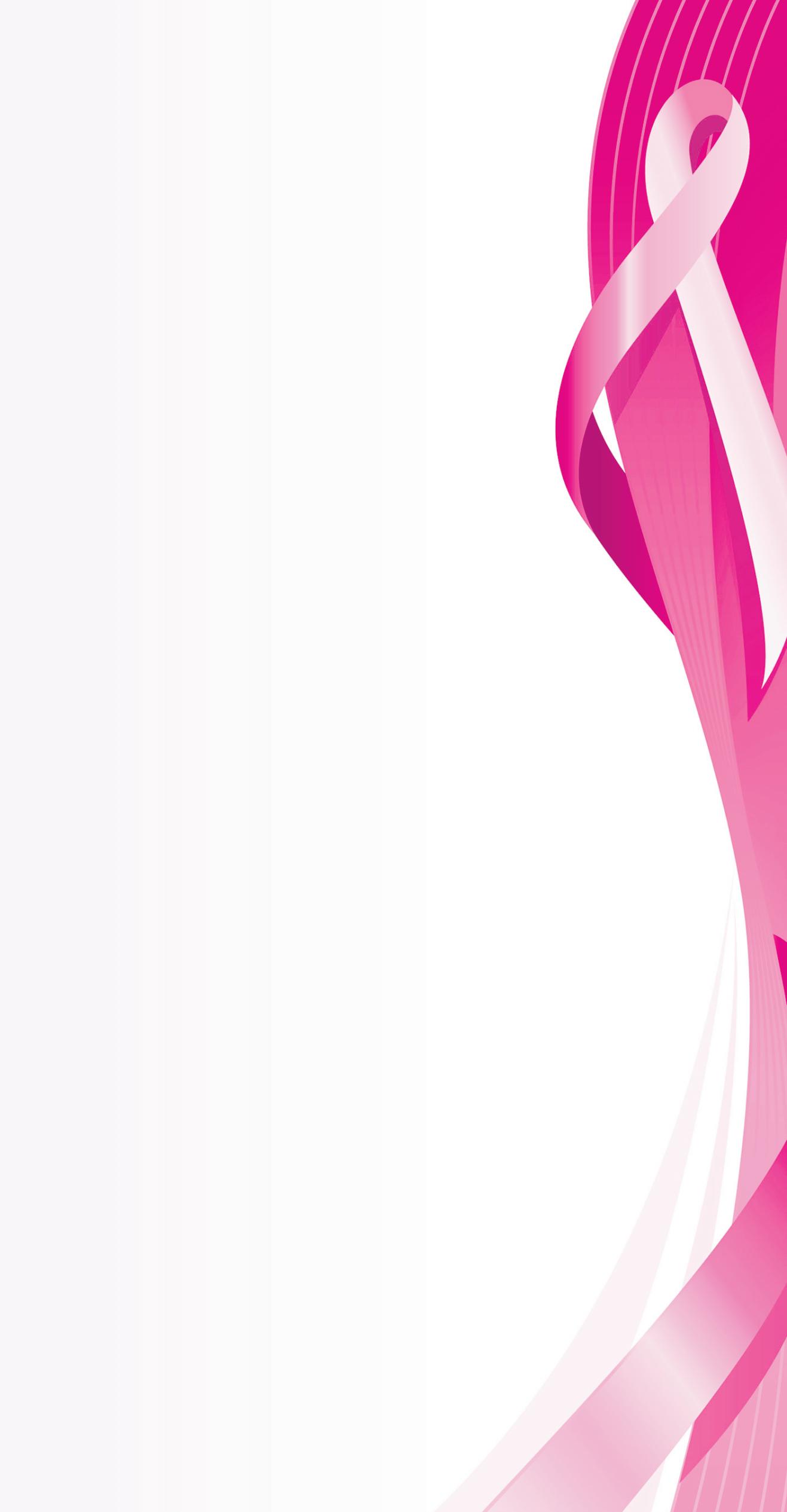
Breast cancer is the most commonly occurring cancer in women across the globe, but it’s important to recognize that breast cancer survival rates have improved dramatically in recent decades, providing hope to the millions of women who may be diagnosed with the disease in the years to come.




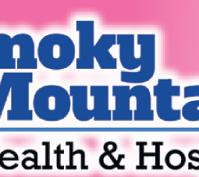















Various factors have helped to improve breast cancer survival rates, and education about the disease is certainly among them. Women are their own greatest allies against breast cancer, and learning to spot its signs and symptoms is a great first step in the fight against this potentially deadly, yet treatable disease.

The American Cancer Society urges women to take note of how their breasts normally look and feel. That knowledge is vital because it helps women recognize when something does not look or feel good to the touch with their breasts. Screening alone may not be sufficient, as the ACS notes that mammograms do not find every breast cancer.




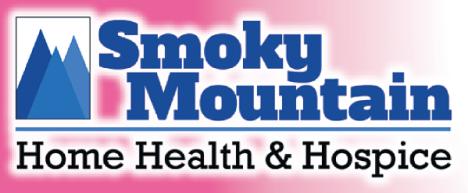

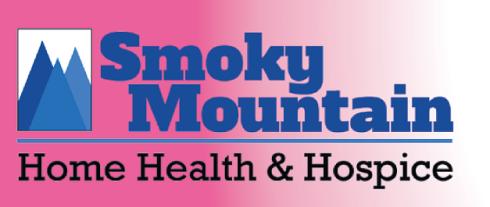


When women are well acquainted




with how their breasts look and feel, they’re in a better position to recognize any abnormalities, which may or may not be indicative of breast cancer. The ACS reports that the following are some potential warning signs of breast cancer.
• A new lump or mass: The ACS indicates that this is the most common symptom of breast cancer. A lump or mass that is cancerous is often painless, but hard and has irregular edges. However, lumps caused by breast cancer also can be soft, round and tender. Some even cause pain.

• Swelling: Some women experience swelling of all or part of a breast even if they don’t detect a lump.
• Dimpling: The skin on the breast may dimple. When this occurs, the skin on the breast sometimes mimics the look of an orange peel.
• Pain: Pain on the breast or nipple could indicate breast cancer.


















• Retraction: Some women with breast cancer experience retraction, which occurs when the nipple turns inward.






















• Skin abnormalities: Breast cancer may cause the skin on the breast to redden, dry out, flake, or thicken.
• Swollen lymph nodes: Some women


with breast cancer experience swelling of the lymph nodes under the arm or near the collarbone. The presence of any of these symptoms merits a trip to the doctor. Women with these symptoms should not immediately assume they have breast cancer, as the ACS notes that various symptoms of breast cancer also are indicative of noncancerous conditions that affect the breasts. Only a physician can diagnose breast cancer, which


The risks of screening mammograms to catch breast cancer may outweigh the benefits for certain women aged 70 or older, new research indicates.
The main risk? Overdiagnosis and treatment of breast cancer that likely wouldn’t have caused any symptoms during a woman’s lifetime.
“For women who are on the younger end of the age range and who are generally healthy, the risk of overdiagnosis from screening may be acceptably low,” said study author Dr. Ilana Richman, a general internist and health services researcher at Yale Cancer Center in New Haven, Conn. “For older women and those with other serious medical conditions, the risks of overdiagnosis are higher and may outweigh the benefits of screening.”
The American Cancer Society recommends that women aged 55 and older undergo mammograms every two years or continue annual screening, and it states that such screening should continue as long as a woman is in good health and expected to live for 10 or more years.
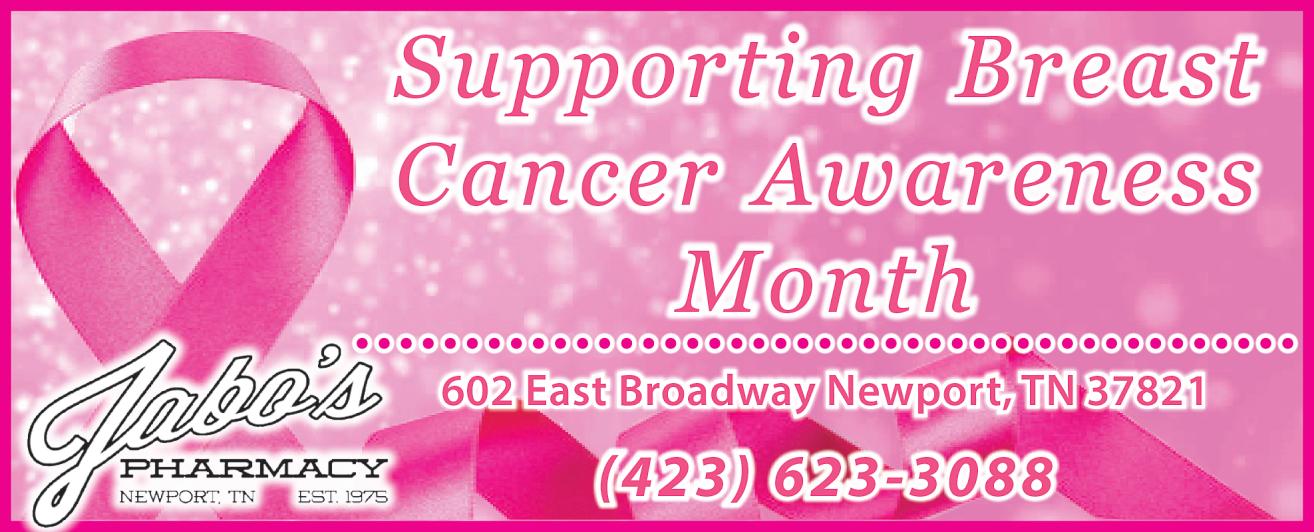
The study, which included close to 55,000 women aged 70 years and older who had been recently screened for breast cancer, found that the risk of overdiagnosis increased with age. Specifically, about 31% of breast cancers picked up among women aged 70 to 74 were considered overdiagnosed. In women aged 74 to 84, up to 47% of breast cancers were overdiagnosed. The risk of overdiagnosis
was highest in women aged 85 and older, the study showed.
“Women who are diagnosed with breast cancer typically undergo treatments including surgery, and possibly radiation, chemotherapy and long-term medications,” Richman said. “What this means is that some women end up getting these relatively intensive treatments for a breast cancer that never would have caused symptoms.”
The value of early detection with a mammogram is improved quality of life and reduced risk of dying from breast cancer, said Dr. Marisa Weiss, chief medical officer and founder of Breastcancer.org.
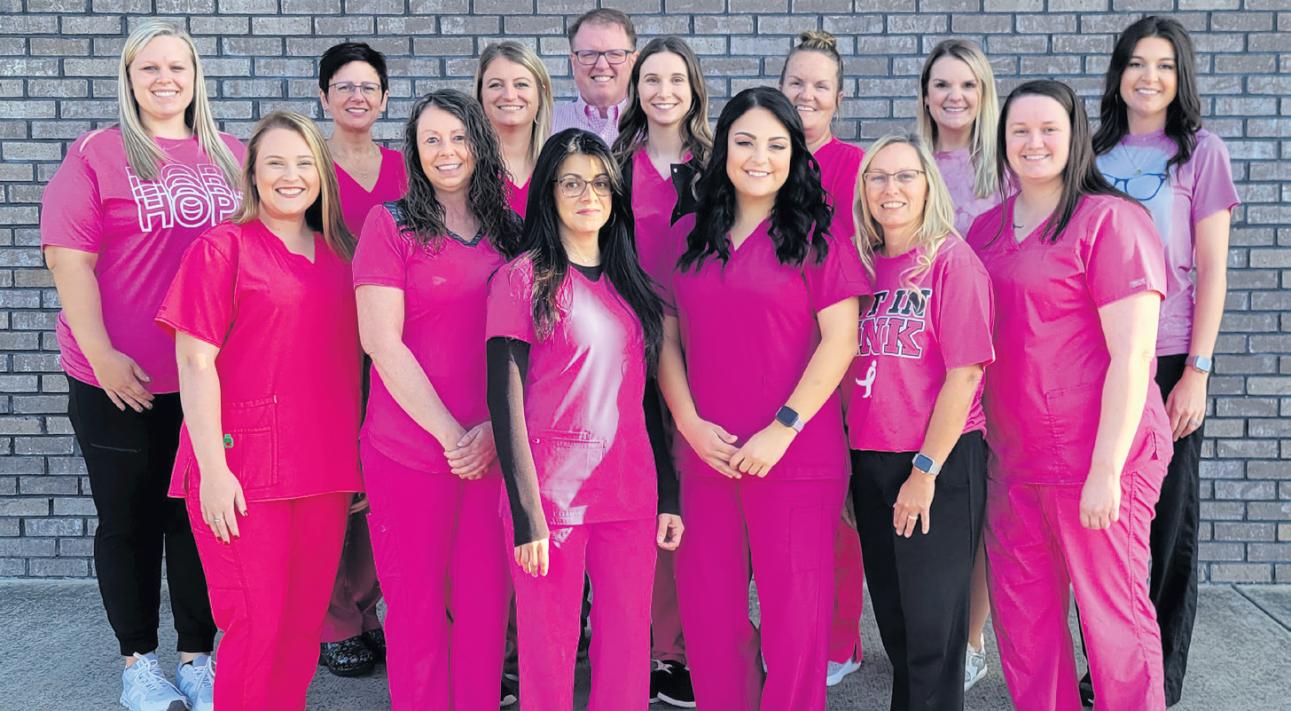


“For women aged 70 and older who are expected to live another five to 10 years, and without other significant active [diseases or conditions], mammography remains important,” said Weiss. “It can improve their quality of life by finding a cancer before it grows and spreads, potentially causing symptoms such as pain, bleeding and malodorous fluid discharge in the breast area or other parts of the body.”
Women who’ve lived to age 70 and older and are in relatively good health are more likely to live a lot longer, she noted. “They know that there are risks with each procedure, and are often willing to take the risk of overdiagnosis to avoid the risk of underdiagnosis,” Weiss said.
That’s exactly how Susan Salenger, 80, sees it. The Petaluma, Calif.-based author of “Sidelined: How Women Can Navigate a Broken Healthcare System,” gets her screening mammogram every
year – without fail. “I am hoping that if I do get breast cancer, I catch it early,” she said. “Not only am I too anxious to skip a mammogram, I am also proactive about my health and would want all the
information and to participate in any treatment decisions.”

This approach makes sense, Weiss added.
CONTINUED ON PAGE 11

Mammograms have long offered early detection of breast cancer, which is why getting them regularly is crucial to women’s health, one expert says.
“There are several risk factors associated with breast cancer. As with many other diseases, risk of developing breast cancer increases as you get older,” said Dr. Mridula George, associate program director of breast medical oncology at Rutgers Cancer Institute of New Jersey.
Breast cancer is the second-most common cancer for women after skin cancer, according to the American Cancer Society.


A woman whose mother or sister developed breast or ovarian cancer may be at high risk for the disease. So, too,
might someone who has multiple family members who developed breast, ovarian or prostate cancer.
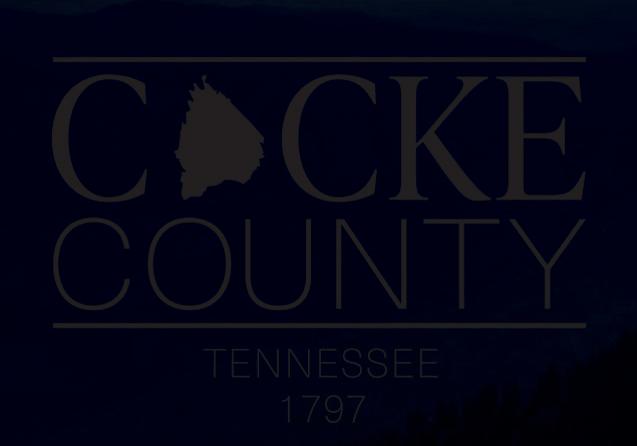
In the early stages of breast cancer, it may not be possible to find signs through breast self-exam. Early disease also doesn’t cause pain, George noted in a Rutgers news release.
Later, symptoms can include a lump or thickening in or near the breast or in the underarm area. It may be seen as a change in the size or shape of the breast or felt as tenderness.
A woman may also experience nipple
discharge or the nipple pulled back into the breast, or a change in the way the skin of the breast, areola or nipple looks or feels, such as being warm, swollen, red or scaly, George added. Mammography uses low-dose X-rays to show abnormal areas or tissues in the breast before a woman has noticeable symptoms. The breasts are each placed in a
special machine between two plates. The plates move together to compress the breast tissue, so it’s easier for the X-ray to obtain a clear image.
The images are stored on a computer where they can be viewed and analyzed by the radiologist and a woman’s doctor.
When breast cancer is detected early and hasn’t spread, the five-year relative survival rate is 99%, George said. Those found during screening exams are more likely to be smaller and less likely to have spread outside the breast.
A woman can talk to her doctor about when to start screenings.
WE’RE STRONGER
If your doctor has scheduled you to have a breast biopsy, you may be wondering what to expect from the procedure. Here, experts will break down exactly what a breast biopsy is, the different types and what happens during each. Plus, you’ll learn what recovery looks like and what your results may mean.
A breast biopsy procedure is when a tissue or fluid sample is taken from an area that shows suspicious growth on a mammogram, ultrasound MRI or other diagnostic test. A doctor called a pathologist will then examine the sample to see if you have breast cancer, according to the National Breast Cancer Foundation (NBCF).

• The NBCF states there are three main types of breast biopsies:
• Fine-needle aspiration
• Core needle
• Surgical
During a fine-needle biopsy, a very thin, hollow needle is used to draw out cells from a fluid-filled sac to check them for cancer. According to the American Cancer Society (ACS), ultrasound imaging may be used to help pinpoint the sac.
In core-needle biopsies, the NBCF and ACS say that a bigger, hollow needle is attached to either a suction or springloaded device, and a larger tissue sample is taken. Core-needle biopsies can also be ultrasound-guided, or a doctor may use an MRI or mammogram machine. This latter procedure is called a stereotactic breast biopsy.
The ACS notes if the results of a needle biopsy breast procedure are unclear, your doctor might order a surgical biopsy. Here, an operation is performed to remove the suspicious mass.
A fine-needle aspiration biopsy is performed in a doctor’s office. The ACS says that the needle is inserted into your breast while you’re lying still on your back,
and the entire procedure takes about 20 to 30 minutes. Since the needle is so small, local anesthetic isn’t always needed.
A core biopsy is also an outpatient procedure, but it may be performed with you sitting up or lying on your back or stomach, depending on whether MRI, ultrasound or mammogram imaging is used. You’ll receive a local anesthetic, and a tiny cut that doesn’t require stitches is made over the area where the biopsy needle is inserted. The ACS notes that a tissue marker or clip is also typically inserted with the needle, to mark the exact spot where the sample was taken.
A surgical biopsy is almost always performed in a hospital using both local anesthesia and sedation or general anesthesia. The ACS explains that during the operation, the surgeon will cut into your breast and remove the suspicious mass, and then stitches will be used to close the area.

For both fine-needle aspiration and core-needle biopsies, you’ll be asked to avoid physically demanding activities for about a day, and you might notice some slight bruising, bleeding or inflammation in the area of the biopsy, according to the ACS.

“There’s not much in the way of recovery. They [patients] could just carry on their normal life,” said Dr. Thomas Buchholz, medical director of Scripps MD Anderson Cancer Center, in Houston.

For surgical biopsies, recovery takes longer and your doctor will give you guidance on how long you can expect to limit your daily activities. In addition to inflammation, bleeding and bruising, the ACS says that you may have a scar after surgery and your breast shape may change.
If cancer is found, the NBCF said that a core-needle biopsy will tell you the type of cancer you have and its grade or growth rate. Tests may also be ordered to find out if certain hormone receptors called progesterone and estrogen are present.
A fine-needle biopsy will only tell you if you have cancer. For this reason, Buchholz
said that your doctor will likely schedule a core-needle biopsy if cancer is found during a fine-needle biopsy.
For surgical biopsies, you’ll also learn the cancer margin or distance between the surrounding tissue and the tumor. This helps you understand whether the cancer has spread or remains localized. The NBCF states you’ll find out your hormone receptor status as well.
Buchholz explained that information on receptors helps guide cancer doctors’ treatment recommendations. For instance, ERpositive and PR-positive cancers tend to respond very well to anti-hormone treatments, whereas ERnegative and PR-negative cancers respond better to chemotherapy.
Only 20% of the over 1 million breast biopsies performed in the United States each year find breast cancer, which totals about 290,000 new cases annually, according to


the Agency for Healthcare Research and Quality.
“I think the thing to let people know is that even when you’re scheduled for a biopsy, most of the biopsies are not going to show cancer,” Buchholz noted.
Though no one is immune to breast cancer, researchers have concluded that certain groups have a higher risk of developing the disease than others. Women who recognize their personal risk for breast cancer may not be able to change certain factors that increase their chances of developing the disease. However, recognition of their personal risk could put women in position to lower that risk in other ways. According to the World Health Organization (WHO), the following are some groups who are at elevated risk of developing breast cancer.


WOMEN: Johns Hopkins Medicine reports that less than 1 percent of all breast cancer cases occur in men. Though it’s still important for men
CONTINUED AT TOP OF PAGE 11
CONTINUED FROM PAGE 10
to recognize they’re not immune to the disease, women must also recognize that nearly all of the more than two million annual breast cancer diagnoses across the globe are found in women.


WOMEN 50 AND OLDER: The Centers for Disease Control and Prevention reports that most breast cancers are found in women who are 50 years old or older. A report from the National Cancer Institute indicates that a 30-year-old woman has a 1 in 204 chance (0.49 percent) of being diagnosed with breast cancer, while a
40-year-old has a 1 in 65 chance (1.55 percent) of being diagnosed. By the time women reach age 60, their risk is 1 in 28 (3.54 percent), while a 70-year-old has a 1 in 24 chance (4.09 percent) of being diagnosed. Though women of any age can get the disease, the risk clearly increases as women get older.
WOMEN WHO MEET THE CRITERIA FOR BEING OVERWEIGHT OR OBESE: The nonprofit organization Susan G. Komen, which helps to raise funds for the fight against breast cancer, notes that women who are overweight or obese after menopause have a 20 to
60 percent higher risk of developing breast cancer than women who are not overweight or obese. The American Cancer Society reports that having more fat tissue increases breast cancer risk because it raises estrogen levels. However, the ACS notes the link between weight and breast cancer risk is complicated, so itÕs worth it for women concerned about their cancer risk to open a dialogue with their physicians.
ALCOHOL: The MD Anderson Cancer Center reports that alcohol consumption and breast cancer risk are linked. Though the precise cause of the link is unknown,

one theory suggests that consuming alcohol can increase estrogen levels as well as the levels of other hormones associated with breast cancer. However, the MDACC warns that the risk is very low, particularly for women who limit their consumption to one drink or less per day. Routinely consuming more than one alcoholic drink per day is a cause for concern.
It’s vital that women recognize their risk for breast cancer. Though any woman can be diagnosed with breast cancer, certain factors, including some that can be avoided, can increase a womanÕs risk for the disease.
CONTINUED FROM PAGE 7
“While our tools are improving rapidly, we still are without the crystal ball that can differentiate lethal cancer from one that is indolent and is unlikely to ruin your quality of life and/or kill you during your natural lifespan,” she





said.
Dr. Otis Brawley co-wrote an editorial accompanying the new study. He is a professor of oncology at the Johns Hopkins University School of Medicine in Baltimore.


“There are cancers that are not a threat to the patient,” Brawley said. “We need to incorporate

the development of tests that objectively and accurately determine the cancers that need treatment from the ones that do not.”
His advice? “If a woman fears cancer, she should get screened, in my mind, but realize she may get overtreatment especially if diagnosed with ductal carcinoma
in situ [DCIS],” he said. DCIS is considered a noninvasive breast cancer.
Dr. Catherine Sarkisian, a geriatrician at the David Geffen School of Medicine at the University of California, Los Angeles, has these important talks with women often.



“Before deciding on whether
or not to have a mammogram, older women should have personalized conversations with their physicians about the risks and benefits of screening that take into account their life expectancy, personal values around risk aversion, and how they value their time away from the medical system,” said Sarkisian.



Individuals can experience a whirlwind of emotion upon being diagnosed with cancer. No one ever expects to receive such a diagnosis, so the moment a physician delivers such news can be emotional and compromise a personÕs ability to focus. Once those emotions settle down and individuals resolve to overcome the disease, they typically have a lot of questions. One of the questions doctors will attempt to answer is which subtype of cancer a person has. For example, when doctors initially deliver a breast cancer diagnosis, they may explain that further testing will be necessary to determine precisely which type of breast cancer an individual has. Identifying the subtype of breast cancer helps doctors choose the most effective course of treatment, but it’s understandable if patients and their families become confused during the process. The following rundown can help breast cancer patients understand this crucial next step after diagnosis.
The American Cancer Society notes that breast cancer type is determined by the specific cells in the breast that become cancer. The Mayo Clinic reports that a medical team will use a tissue sample from a patient’s breast biopsy or, for patients who have already undergone surgery, the tumor to identify the cancer type.
There are many types of breast cancer, but some are more common than others. Invasive and non-invasive are the two main subtypes of breast cancer.
According to the University of Pittsburgh Medical Center, the most common types of invasive breast cancer are invasive ductal carcinoma, which affects the inner lining of the milk ducts, and invasive lobular carcinoma, which originates from the glands that produce milk.
The UPMC
reports that the most common in situ types are ductal carcinoma in situ, which is cancer that remains within the milk ducts, and lobular carcinoma in situ, which does not often develop into breast cancer though it is considered a risk factor for an invasive form of the disease.
The ACS notes that triple-negative breast cancer is an aggressive form of breast cancer that accounts for roughly 15 percent of all breast cancers. Triple-negative breast cancer can be difficult to treat.

Less common types of breast cancer, each of which account for between 1 and 3 % of diagnoses in a given year, include Paget disease of the breast, angiosarcoma

and phyllodes tumor.
A breast cancer diagnosis marks the beginning of a sometimes lengthy but often successful journey that has ended in full recovery for millions of women across the globe. More information about the various types of breast cancer can be found at cancer.org.

The incidence of local recurrence at five years is low among women aged at least 55 years with T1N0, grade 1 or 2, luminal A breast cancer who were treated with breastconserving surgery and endocrine therapy without radiotherapy, according to a study published in the New England Journal of Medicine.

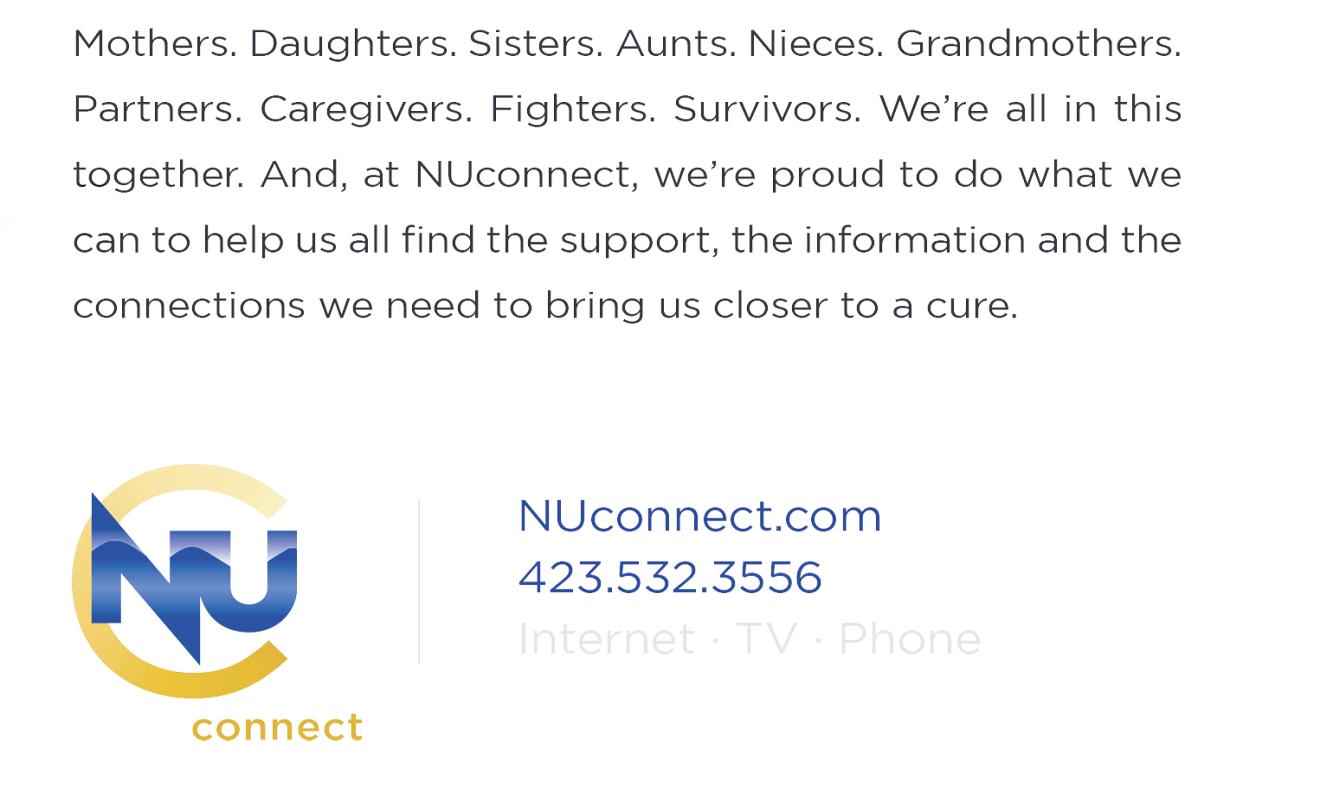
Timothy J. Whelan, B.M., B.Ch., from McMaster University in Hamilton, Ontario, Canada, and colleagues performed a prospective cohort study involving women aged at least 55 years who had undergone breast-conserving surgery for T1N0, grade 1 or 2, luminal A-subtype breast cancer and had received adjuvant endocrine therapy. Ki67 immunohistochemical analysis
was performed, and patients with a Ki67 index of 13.25% or less did not receive radiotherapy.
Five hundred eligible patients were enrolled. The researchers found that recurrence was reported in 2.3% of the patients at five years after enrollment. In 1.9% of the patients, breast cancer occurred in the contralateral breast, and recurrence of any type occurred in 2.7%.
“Women 55 years of age or older with T1N0, grade 1 or 2, luminal A breast cancer had a very low risk of local recurrence at five years after breast-conserving surgery when treated with endocrine therapy alone,” the authors write. “The prospective and controlled nature of this study supports our conclusion that such patients are candidates for omission of radiotherapy.”

Ou rs ea rc hf or ac ur e ke eps us co nnec te d.
A breast cancer diagnosis affects every facet of a woman’s life. While women and their families must prioritize treatment, a host of additional variables, including work, also merit consideration after a breast cancer diagnosis.


Work is an important part of life, so it’s understandable if women are concerned about how a breast cancer diagnosis will affect their careers. With that in mind, women can consider these tips as they share news of their diagnosis with their employers.




Prioritize your own comfort when speaking to an employer about your diagnosis. Breastcancer.org notes that a woman’s comfort level is the most important factor when sharing news of a breast cancer diagnosis with an employer. Some women may want to inform only a few coworkers they’re close with, while others may find it easier to let everyone know. There’s no wrong or right way to share a diagnosis, so women should prioritize their own comfort when choosing which way to go. To ensure things go smoothly and your wishes are honored, consider first breaking the news to a supervisor in a private face-to-face meeting or Zoom call.
Decide what you want to share. The Australia-based Cancer Council notes that individuals must decide what they want to share regarding their diagnosis. Women can speak to their physicians to determine
how long they will continue working, if their ability to work fulltime will be affected by treatment and the projected length of treatment.












Answers to these questions can help women decide how much to share with their employers. If treatment will be lengthy and require time off to recover, then sharing such information can help employers arrange to cover your responsibilities.


Take additional measures to overcome side effects of treatment. Breastcancer. org notes that treatment can produce cognitive side effects such as memory loss or difficulty concentrating. Successful professionals will undoubtedly want to maintain the standard they have established for themselves, and that can be done by taking a few simple steps to overcome any cognitive issues that may arise during treatment. Record Zoom calls so you can go back and view them, if necessary. Take copious notes during strategizing sessions. Begin using a planner
so you can stay on top of deadlines. These simple measures are easy to employ and can ensure women donÕt miss a beat during treatment. Take time off, if necessary. Time off should always be a consideration during cancer
treatment. Breastcancer.org notes that various programs can help women meet their financial obligations if they’re no longer earning income. Some employers may pay full salaries during treatment and not count time off as vacation or personal time, while others may grant short-term disability benefits that can provide some income during extended time off. Explore all of your options with the human resources staff at your firm.
A breast cancer diagnosis may require women to alter their work habits and schedules. Even the simplest tweaks can have a profound impact and allow women to direct much of their energy and focus on their treatment.

Millions of women across the globe are survivors of breast cancer. Those women serve as inspiration to millions more individuals, even as they bravely live with the threat of recurrence. The Cleveland Clinic notes that most local recurrences of breast cancer occur within five years of a lumpectomy, which is a common breast cancer treatment during which cancer cells and a small margin of healthy breast tissue are removed. Even if recurrence is unlikely and/or beyond a woman’s control, the lingering notion that breast cancer return at any moment can be difficult to confront. Learning about recurrence could calm the nerves of breast cancer survivors and their families.







A second diagnosis of breast cancer does not necessarily mean women are experiencing a recurrence. The Cleveland Clinic notes that breast cancer that develops in the opposite breast that was not treated and does not appear anywhere else in the body is not the same thing as recurrence. Recurrence occurs when the cancer is detected in the same breast in which the disease was initially detected. Breastcancer.org notes that cancer found in the opposite breast is likely not a recurrence.
Treatment for breast cancer is often very successful, particularly in patients whose cancer was discovered early. Recurrence can happen when single cancer cells or groups of cancer cells are left behind after surgery. Breastcancer. org notes that tests for cancer cannot






detect if single cancer cells or small groups of cells are still present after surgery, and a single cell that survives post-surgery rounds of radiation therapy and chemotherapy can multiply and ultimately become a tumor.
There are different types of breast cancer recurrence, including:
• Local recurrence: The Cleveland Clinic notes that a local recurrence diagnosis indicates the cancer has returned to the same breast or chest area as the original tumor.

• Regional recurrence: A regional recurrence means the cancer has come back near the original tumor, in lymph nodes in the armpit or collarbone area.
• Distant recurrence: A distant recurrence indicates the breast cancer has spread away from the original tumor. The Cleveland Clinic notes this is often referred to as stage 4 breast cancer. This diagnosis indicates the tumor has spread to the lungs, bones, brain, or other parts of the body.
Johns Hopkins Medicine notes that certain variables unique to each individual affect the risk of breast cancer recurrence. This is an important distinction, as women who have survived breast cancer but are concerned about recurrence should know that they will not necessarily experience one, even if a first-degree relative or friend did. The type of cancer and its stage at diagnosis can elevate risk, which also is highest during the first few years after
treatment. The Cleveland Clinic notes that women who develop breast cancer before age 35, which is uncommon, are more likely to experience a recurrence. In addition, women diagnosed with later stage breast cancers or rare forms of the disease, including inflammatory breast cancer, are more likely, though not guaranteed, to experience a recurrence.
The fear of breast cancer recurrence can be tough for survivors of the disease to confront.




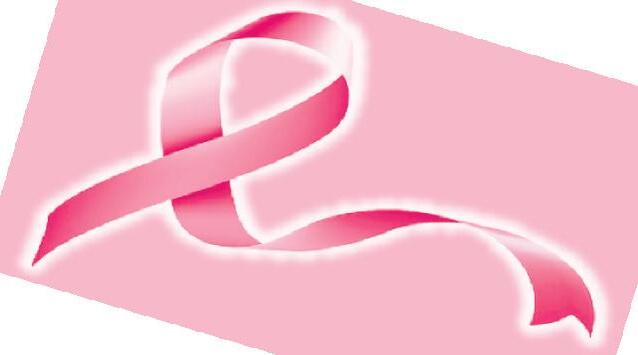

Breast cancer is a cause for concern for millions of women. Each year about 264,000 cases of breast cancer are diagnosed in women in the United States, according to the Centers for Disease Control and Prevention.
One of the more notable symptoms of breast cancer is the presence of a lump in the breast. Though not all lumps are malignant, it’s important that women learn about breast anatomy and lumps as part of their preventive health care routines.

Mount Sinai says that breast lumps can occur at any age in both men and women. Hormonal changes can cause breast enlargement and lumps during puberty, and boys and girls may even be born with lumps from the estrogen received from their mothers.
It is important to note that the vast majority of breast lumps are benign.
The National Institutes of Health says 60% to 80%of all breast lumps are noncancerous. The most common causes of breast lumps are fibroadenomas and fibrocystic changes. Fibroademomas are small, smooth, moveable, painless round lumps that usually affect women who are at an age to have children, indicates the Merck Manual. They are non-cancerous and feel rubbery.
Fibrocystic changes are painful, lumpy
breasts. This benign condition does not increase a woman’s risk for breast cancer. Symptoms often are worse right before oneÕs menstrual period, and then improve after the period begins.

Additional factors can contribute to the formation of lumps. Breast cysts are fluid-filled sacs that likely go away on their own or may be aspirated to relieve pain. Complex cysts may need to be removed surgically.
Sometimes cysts also may form in milk ducts throughout the breasts.
Lumps also may be the result of injury. Blood can collect under the skin and form a type of lump called a hematoma. Other lumps may be traced to lipomas, which is a collection of fatty tissue or breast abscesses, which typically occur if a person is breastfeeding or has recently given birth.
Additional causes of lumps can be discussed with a doctor. Though the majority of lumps are not a cause for concern, it is important for people to regularly feel their breasts to check for abnormalities. Doctors may recommend annual mammograms to women age 40 and older. In its earliest stages, breast cancer may produce little to no visible symptoms, but a mammogram may be able to catch something early on.
Cancer is a formidable disease that the World Health Organization reports is the leading cause of death worldwide. Figures vary, but organizations such as the WHO and the American Cancer Society estimate that around 9.5 million people die from cancer every year.
No type of cancer causes more deaths in women across the globe than breast cancer. Though the five-year survival rate for breast cancer patients has increased by a significant margin in recent decades, a study published in The Asian Pacific Journal of Cancer Prevention reported a significant increase in breast cancer mortality rate in the 25-year period preceding the study. The researchers behind the study theorized that the spike in mortality rate could be due to an increase in incidence and prevalence of breast cancer.
Like all cancers, breast cancer cannot be prevented. However, various healthy habits could help women reduce their risk for the disease.
• Avoid alcohol. The ACS reports

that alcohol consumption is a clear risk factor for breast cancer. Risk increases with the amount of alcohol a woman consumes. For example, a woman who consumes one alcoholic drink per day has a 7 to 10% higher risk of getting breast cancer than a woman who abstains from alcohol. Drinking two to three drinks per day could increase risk by around 20 percent.
• Establish and maintain a healthy weight. Being overweight or obese increases breast cancer risk, particularly among postmenopausal women. According to the ACS, after menopause women get most of their estrogen from fat tissue. Fat tissue increases estrogen levels in the body, which in turn increases a woman’s risk for breast cancer. Elevated levels of insulin in the body, which is common among individuals who are overweight, also has been linked to higher breast cancer risk. Establishing and maintaining a healthy weight cannot prevent breast cancer, but it can help women reduce their risk for
the disease.


• Maintain a physically active lifestyle. A sedentary lifestyle increases a person’s risk for various conditions and diseases. Women who live such a lifestyle are at elevated risk for breast cancer. The ACS notes that sedentary behavior such as sitting, lying down, watching television, or engaging with screen-based forms of entertainment that do not require physical activity can increase breast cancer risk, especially for women who spend most of their work day sitting down. A more physically active lifestyle that includes routine exercise can help women reduce their breast cancer risk.

• Adopt a nutritious diet. Eating right is another way for women to reduce their breast cancer risk. Vegetables,
fiber-rich legumes such as beans and peas, fruits across the color spectrum, and whole grains are some components of a healthy, nutrient-rich diet that can help lower breast cancer risk. Women also can avoid certain foods, such as red and processed meats and refined grains, to lower their breast cancer risk.
Though there’s no guaranteed way to prevent breast cancer, women can embrace various healthy habits to lower their risk for the disease.
A nutritious diet is a vital component of a healthy lifestyle. Unfortunately, a popular misconception that characterizes healthy foods as lacking flavor can be hard to overcome. Thankfully, the notion that healthy foods are bland doesn’t hold water, and various antioxidant-rich foods are a testament to just how flavorful nutritious foods can be.
Pecans, blueberries, strawberries, kale, and beans are just a handful of the many flavorful foods that are rich in antioxidants. Antioxidant-rich foods benefit the body in myriad ways, and recognition of those benefits might compel more people to include these flavorful, nutritious foods in their diets.
Stanford Medicine notes that researchers are currently investigating the role antioxidants might play in decreasing
a person’s risk for cancer. Though it’s hard to draw a straight line between antioxidants and cancer risk, the National Cancer Institute notes that the antioxidant vitamin C may protect against cancers of the rectum, pancreas, cervix, breast, and lung. In addition, the American Cancer Society reports that the antioxidant beta carotene, which is found in orange, yellow and green leafy fruits and vegetables, may prevent cancer by enhancing white blood cells that are responsible for blocking harmful free radicals.
The American Optometric Association reports that adding antioxidants to a diet can help people improve their vision. The AOA notes that various studies have shown that the antioxidants lutein and zeaxanthin reduce the risk for chronic eye diseases. Such studies found that
individuals who got the most lutein and zeaxanthin had a much lower risk for developing new cataracts. In addition, the fat-soluble antioxidant vitamin E, which can be found in nuts and sweet potatoes, among other foods, can protect cells in the eyes from free radicals that can cause the breakdown of healthy tissue.
There’s much debate surrounding a potential link between antioxidants and a lower risk for heart disease. Much of that debate has to do with antioxidant supplements, which tend to deliver higher concentrations of antioxidants than natural sources like fruits and vegetables. Individuals who want to try antioxidant supplements in an effort to improve heart health should discuss that option with
their physicians before making any changes to their routines, as this approach may not be best for everyone. That said, numerous studies have found that eating a diet that features a lot of antioxidant-rich foods, including fruits and vegetables, can lower risk for heart disease.
Antioxidants can be a powerful ally as people strive to be as healthy as possible. And the many flavorful antioxidant-rich foods can quell any misconceptions that a healthy diet must be a bland diet.
The prevalence of cancer is widely known. Affecting people of every ethnicity and across the socioeconomic spectrum, cancer poses a threat to people in all corners of the globe. And that threat could be more significant in the immediate future. Estimates from the International Agency for Research on Cancer indicate that the global population boom and the growth of the world’s aging population could result in more than 16 million cancer deaths each year by 2040.
The statistics surrounding global incidence rates for cancer are startling, which can give the impression that cancer is an inevitability for hundreds of millions of people across the globe. However, there’s much individuals can do to reduce their cancer risk.
According to the MD Anderson Cancer
Center, a healthy diet can help reduce cancer risk. A diet that focuses on plants and emphasizes healthy choices may not eliminate the threat of cancer, but it can be an integral component of a preventive health care regimen. With that in mind, the following are five fruits and vegetables associated with reducing cancer risk, courtesy of the MDACC.
1. BERRIES: Berries contain antioxidants, which protect the body from cell damage that can contribute to various cancers, including skin cancer, lung cancer and breast cancer, among others. Blueberries, raspberries and strawberries make wonderful additions to anyone’s diet.
2. CRUCIFEROUS VEGETABLES: Cruciferous vegetables include broccoli,

bok choy, cabbage, and brussel sprouts, among others. The MDACC notes that studies have indicated that special plant compounds in cruciferous vegetables may protect the body from stomach cancer and cancers of the mouth, pharynx, larynx, and esophagus.
3. GARLIC: The experts at Mount Sinai note that garlic is often linked with reduced risk for heart disease, notably the prevention of atherosclerosis, which affects the arteries through the deposition of plaques of fatty acids along the arterial walls. However, antioxidant-rich garlic also helps the body fight off harmful free radicals that can contribute to cancer.
4. SPINACH: The Centers for Disease Control and Prevention notes that colorectal cancer is one of the leading
causes of cancer deaths in the United States. Studies have found that spinach inhibits the growth of colon polyps that can develop into colorectal cancer.
5. TOMATOES: Lycopene is an antioxidant that gives tomatoes their bright red color. According to the National Cancer Institute, though human studies have produced inconsistent results, various in vitro and animal studies have indicated that lycopene may have chemopreventive effects for cancers of the prostate, skin, breast, lung, and liver.
Eating these five fruits and vegetables is not the only way to use diet in the fight against cancer. Individuals are urged to speak with their physicians to learn about the many ways to utilize food in cancer prevention.
There’s never a good time to receive a breast cancer diagnosis. Such news often changes the lives of patients and their families. Though survival rates for breast cancer have improved dramatically in recent years, a diagnosis is still cause for concern. And that concern only grows when the woman who is diagnosed also happens to be pregnant.
The National Cancer Institute notes that breast cancer during pregnancy is rare. NCI data indicates breast cancer occurs in about one in every 3,000 pregnancies. However, the rarity of such diagnoses does not make them any easier to confront. Knowledge can be vital as women and their families navigate a breast cancer diagnosis during pregnancy.

The American Cancer Society reports that women can safely be treated for breast cancer during pregnancy. However, treatment for pregnant women will likely differ from treatment for women who are not expecting. The ACS notes that the types of treatment available to pregnant women and the timing of the treatment might be affected by the pregnancy. Various factors will affect which course of treatment doctors decide to pursue when a patient is pregnant. The National Breast Cancer Foundation indicates such factors include:

• Tumor size
• Tumor location
• Which term of the pregnancy a woman is in
The ACS adds that whether or not the


tumor has spread, and how far it has spread, are additional factors doctors will consider when determining a course treatment for pregnant women diagnosed with breast cancer. A woman’s overall health and personal preferences also will be considered prior to beginning treatment.


The NBCF reports that doctors will consider popular treatments like chemotherapy, radiation and hormone therapy when treating breast cancer patients who are pregnant. However, the decision to administer such treatments to pregnant women is not as straightforward as it might be when planning a course of treatment for women who are not expecting. For example, though chemotherapy can be safely administered to pregnant women, there are specific windows of time to deliver chemotherapy without harming the baby. Radiation is considered unsafe for an unborn child, so while it’s something doctors will consider or even recommend when designing a treatment plan for pregnant women, the NBCF notes it is always administered after the child is born. The same typically goes for hormone therapy, as the NBCF reports that the effects of hormone therapy on unborn children are still not entirely understood.
Many new mothers aspire to breastfeed their newborns, but the ACS reports that doctors recommend women who are
about to receive breast cancer treatment cease or not start breastfeeding. Drugs used during chemotherapy, hormone therapy and targeted therapy can enter breast milk and be passed on to the baby.
A breast cancer diagnosis during pregnancy is rare, but the ACS reports
that most studies have found that outcomes among pregnant and nonpregnant women with breast cancer are roughly the same for cancers found at the same stage. Such studies can provide hope to women and their families as they embark on their treatment journeys.